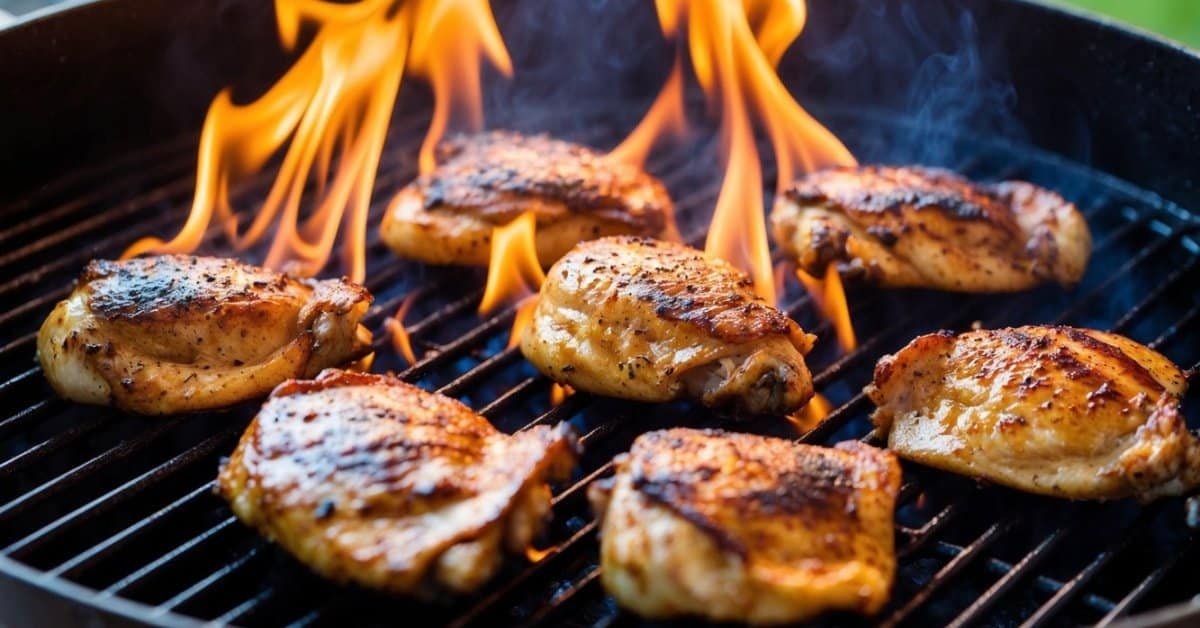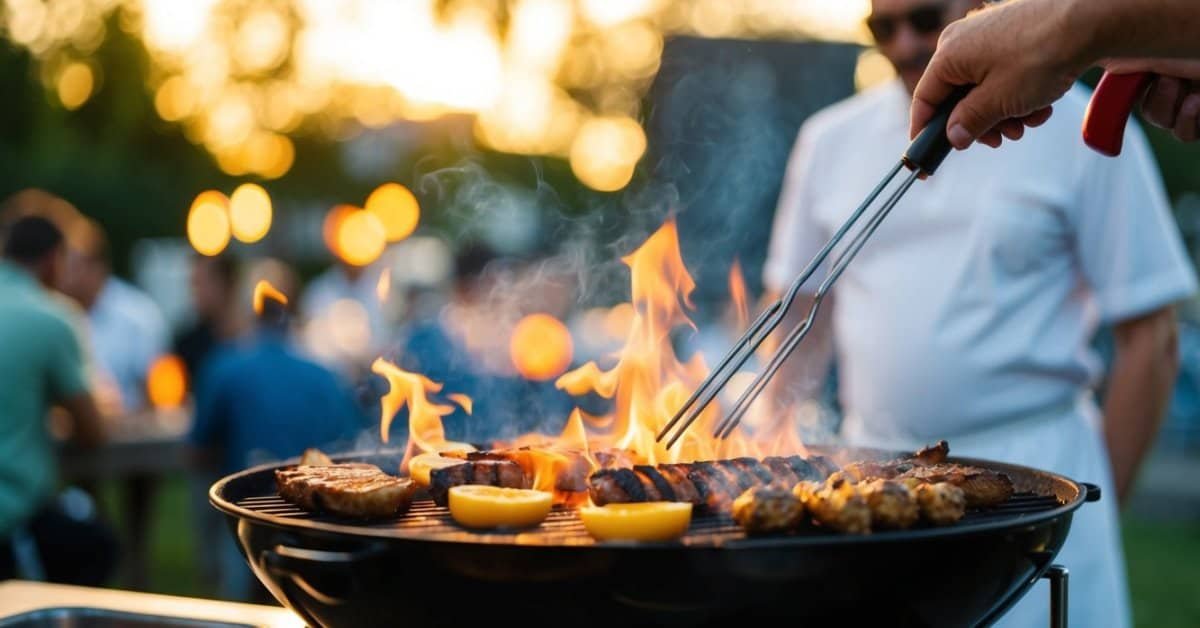I love nothing more than firing up the grill on a sunny day, sharing good food and laughter with friends and family. But while outdoor BBQs are all about fun and flavor, it’s crucial to keep food safety in mind to ensure everyone stays healthy and happy.

Over the years, I’ve picked up some essential tips that make grilling not only delicious but also safe. From handling raw meats properly to maintaining the right temperatures, these practices can help you avoid common pitfalls and enjoy your BBQ to the fullest.
Following a few simple guidelines can make all the difference between a great meal and a mishap. Let’s dive into some easy-to-follow food safety tips that will elevate your next outdoor gathering.
Choosing Safe Ingredients
Selecting safe ingredients ensures a healthy BBQ experience. I prioritize purchasing from reputable suppliers to guarantee freshness and quality. Inspect meat packages for intact seals and check expiration dates before buying. Refrigerate perishable items at or below 40°F until grilling. I thoroughly wash all fruits and vegetables under running water to remove contaminants. Separate raw and cooked foods to prevent cross-contamination. Use separate cutting boards and utensils for different food types. Opt for marinating in the refrigerator, not on the counter, to maintain safety.
Key Practices
- Purchase Quality: Buy from trusted vendors with high hygiene standards.
- Check Labels: Verify expiration dates and package integrity.
- Proper Storage: Keep perishables chilled until ready to cook.
- Clean Produce: Wash all fruits and vegetables thoroughly.
- Separate Foods: Use different surfaces for raw and cooked items.
- Safe Marinating: Marinate foods in the refrigerator only.
Storage Temperatures
| Food Type | Safe Storage Temperature |
|---|---|
| Meat | ≤ 40°F |
| Poultry | ≤ 40°F |
| Seafood | ≤ 40°F |
| Vegetables | 32°F – 40°F |
| Fruits | 32°F – 40°F |
By following these guidelines, I ensure that all ingredients used in my outdoor BBQs are safe and reduce the risk of foodborne illnesses.
Proper Food Storage
Storing food correctly ensures safety and freshness during your BBQ. I follow these practices to keep everything in top condition.
Keeping Perishable Foods Chilled
I keep perishable items, like meats and dairy, at or below 40°F. Using coolers with ice packs maintains the temperature, especially on hot days. Pack raw meats separately from other foods to prevent leaks. Store salads and desserts in insulated containers to stay cool until serving.
Preventing Cross-Contamination
I separate raw and cooked foods using different utensils and plates. Cutting boards designate areas for meats and vegetables to avoid mixing. I wash my hands thoroughly after handling raw items. Keeping surfaces clean and organized minimizes the risk of cross-contamination.
Safe Food Handling
Ensuring safe food handling is crucial for a successful BBQ. I follow these practices to keep everyone healthy and happy.
Hand Washing Techniques
I wash my hands thoroughly before handling any food. Using warm water and soap, I scrub for at least 20 seconds. I make sure to rinse and dry my hands with a clean towel to remove all contaminants.
Using Clean Utensils
I always use separate utensils for raw and cooked foods. After handling raw meat, I wash knives, cutting boards, and other tools with hot, soapy water. This prevents cross-contamination and keeps my BBQ safe.
Cooking to Safe Temperatures
Ensuring your food reaches safe internal temperatures is crucial for preventing foodborne illnesses during your BBQ. I follow these practices to guarantee my grilled dishes are both delicious and safe to eat.
Using a Food Thermometer
I always use a reliable food thermometer to check the internal temperatures of my meats. For example:
- Poultry: 165°F
- Beef, Pork, Lamb, and Veal (steaks, chops, roasts): 145°F with a 3-minute rest time
- Ground meats: 160°F
- Seafood: 145°F
Inserting the thermometer into the thickest part ensures accurate readings without piercing the juices excessively.
Avoiding Undercooked Meats
To avoid undercooked meats, I monitor cooking times and temperatures closely. I ensure:
- Steaks and chops reach at least 145°F and allow a rest period.
- Chicken breasts hit 165°F to eliminate harmful bacteria.
- Ground beef cooks to 160°F, ensuring thorough heating throughout.
By adhering to these temperature guidelines, I minimize the risk of foodborne illnesses and serve safe, flavorful meals to my guests.
Serving and Keeping Food Safe
Ensuring your food stays safe while serving and after your BBQ is crucial. Here are the best practices to maintain food safety throughout your outdoor gathering.
Holding Temperatures
Maintaining proper holding temperatures prevents the growth of harmful bacteria. Keep hot foods at or above 140°F using warming trays or chafing dishes. Cold items should stay at or below 40°F, utilizing ice packs or coolers. Use a food thermometer to regularly check temperatures, ensuring consistency and safety throughout the event.
Promptly Refrigerating Leftovers
After your BBQ, refrigerate leftovers within two hours to minimize bacterial growth. Store foods in shallow containers to allow rapid cooling and place them in the refrigerator or a cooler with ice promptly. Label containers with the date to keep track of freshness, and consume leftovers within three to four days to ensure they remain safe to eat.

Cleaning Up Properly
- Clean the grill while it’s warm. I scrape off food residue with a grill brush, then wipe surfaces with a non-toxic cleaner.
- Wash all utensils and dishes. I use hot, soapy water and separate sponges for raw and cooked items to prevent cross-contamination.
- Disinfect food preparation areas. I wipe down countertops and cutting boards with a suitable disinfectant.
- Store leftovers promptly. I refrigerate them within two hours in shallow containers, labeling each with the date.
- Dispose of waste properly. I seal garbage bags tightly and remove them from the picnic area to avoid attracting pests.
Conclusion
« How to Cook Steak on a Gas Grill: Expert Tips for Perfectly Grilled Steak
Top Kamado Grill Accessories You Need for the Ultimate Grilling Experience »
Planning a BBQ can be a blast when you prioritize food safety. It’s all about enjoying good times without worrying about what’s on the grill. By taking a few simple steps, you ensure that everyone leaves with happy memories and healthy bodies.
I love seeing friends and family gather around delicious food, and knowing that you’ve taken care to keep everything safe makes the experience even better. So next time you fire up the grill, keep these tips in mind and focus on what really matters—having fun and savoring every bite.














